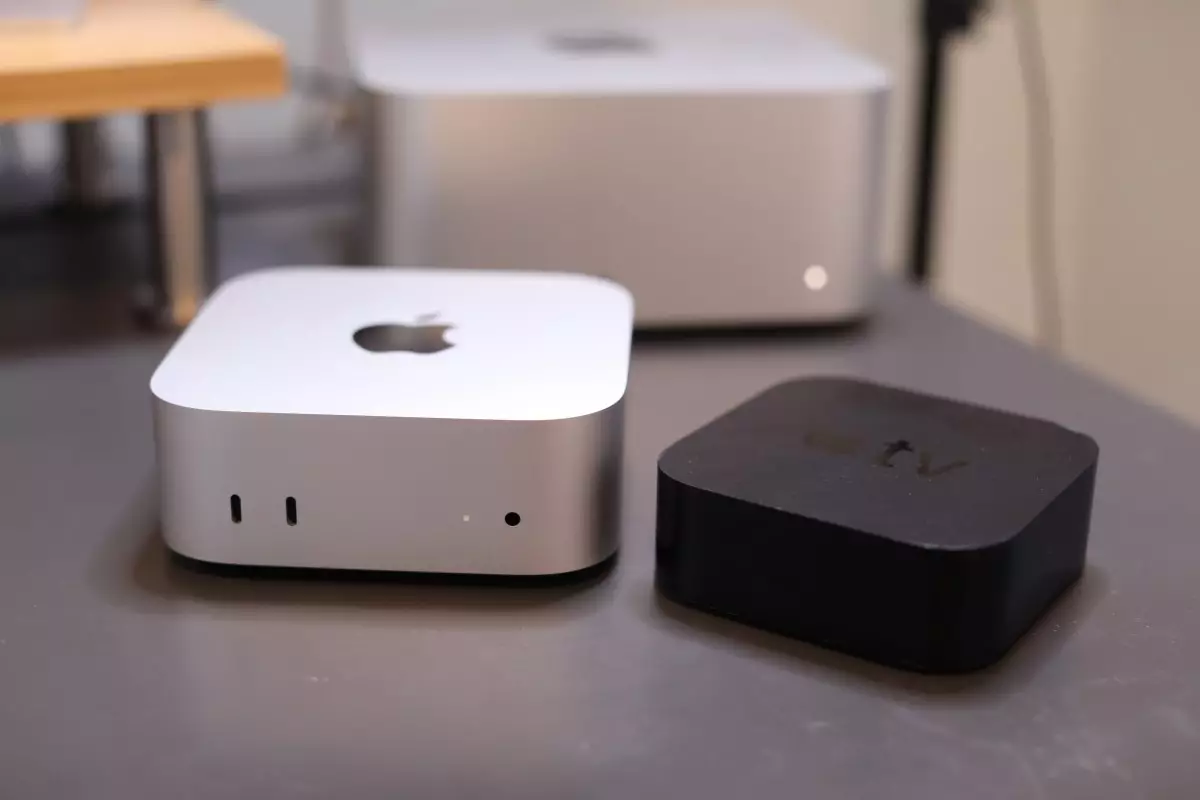The Mac Mini has had a tumultuous presence within Apple’s desktop offerings, often overshadowed by its glitzier counterparts, such as the iMac and Mac Pro. The recent enhancements brought forth by Apple’s M series chips signal a refreshed attention to this previously marginalized model. With the introduction of the new Mac Mini, Apple takes a bold step forward; however, it raises pertinent questions about its positioning in Apple’s ecosystem amidst rising prices and competition.
For a long time, the Mac Mini was perceived as an outlier within Apple’s desktop portfolio. While Apple’s flagship products received constant innovation and significant marketing pushes, the Mini languished without noteworthy changes for nearly a decade. However, the 2020 launch of Apple’s M series chips reignited interest in this compact desktop. Apple seized the moment to reconnect with users, but the new design and features are long overdue. Notably, the latest iteration of the Mini has finally received a substantial redesign since 2010. This update signifies more than just a fresh coat of paint; it represents Apple’s commitment to re-establishing the Mac Mini’s relevance.
One of the most tangible updates is the change in dimensions. The redesigned Mac Mini is slightly larger than a typical Apple TV, establishing it as a distinctly separate entity in Apple’s product lineup while maintaining a contemporary aesthetic that echoes the Mac Studio. The brushed aluminum and rounded edges offer a clean, modern look; however, the reduced size inevitably comes with compromises regarding port availability.
Apple has chosen to streamline the port offerings in the new Mac Mini. With only a handful of ports available—three Thunderbolt ports at the back and two USB-C ports at the front—it risks alienating power users who require multiple connections. In contrast, the Mac Studio flaunts a more generous array of ports, including USB-A and SDXC card readers. This discrepancy raises questions about whether the Mini is designed primarily for casual users or those who demand greater connectivity.
Moreover, the introduction of Thunderbolt 5 with the M4 chip presents exciting possibilities for data transfer and connectivity. However, integrating such advanced technology with limited port availability may hinder the device’s usability for professionals accustomed to a more extensive connection landscape.
Critically, the Mac Mini’s pricing structure is worth contemplation. Starting at $599, it provides an entry point into Apple’s ecosystem for those seeking a desktop setup. Yet, as users consider upgrades—especially when looking at the M4 Pro variant—the price escalates rapidly. A fully loaded model with enhanced features approaches $4,699, and once additional peripherals come into play, the total can eclipse $7,000. This sudden increase prompts reflection on the device’s value proposition, particularly in contrast to other offerings like the iMac that bundle peripherals with their systems.
With such pricing, the Mini sands distinctively between the iMac and Mac Studio. It seems to cater primarily to an audience who may already have a monitor or prefers to select their display rather than opting for an all-in-one solution. However, Apple hasn’t successfully delineated this target market, leaving potential buyers uncertain about its intended use and unique selling points.
Not all design choices met with acclaim. Perhaps the most bizarre aspect is the relocation of the power button to the base of the desktop. Users might need to lift the Mac Mini to reach this essential function, a move that some might find impractical. In contrast, the rear-mounted power button on the Mac Studio is far more user-friendly. While not a dealbreaker, such decisions add to an overall feeling of inconsistent design ethos across Apple’s products, especially given the attention to detail that the company typically emphasizes.
Ultimately, while the new Mac Mini represents a significant leap forward in some respects, it remains veiled in ambiguity regarding its purpose and market position. Its ideal consumer may be a tech-savvy user looking for an affordable entry point into Apple’s ecosystem without the constraints of an all-in-one device. Yet, it’s clear that for someone seeking a premium desktop experience, better-established options like the iMac or Mac Studio may still reign supreme.
Nonetheless, the Mac Mini’s compact design makes it an attractive option for those with limited desk space. Its viability also extends to business environments, where its relatively moderate price may drive bulk purchases. However, for everyday consumers, the choice offerings might better align with their needs categorized primarily into either laptops or the full-fledged desktop experience provided by the iMac.
In sum, the Mac Mini is a well-crafted device that brings excitement but lacks an obvious niche in the expansive lineup of Apple desktops. It stands as an option worthy of consideration, but prospective buyers should weigh their requirements carefully before committing to an investment that may not fully satisfy their needs or expectations.

